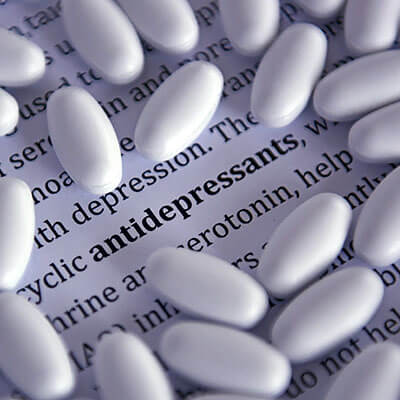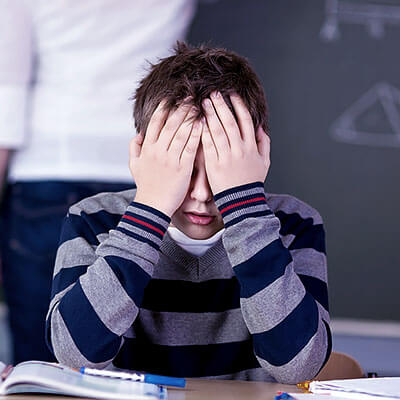Introduction
The word "depression" is used in different senses - in scientific, dormitory and literary ones. In the latter two cases, depression is most commonly referred to as something that is not depression. Depression is a deep sadness, accompanied by a sense of despair and anxiety. In addition to depression, there is also hypothermia (mood decline, familiar to almost everyone, but short-lived and unexpressed; hypothermia accompanies almost all mental illness and is also found in perfectly healthy people). Dystymia is often registered in children and adolescents - such a short-term mood disorder, which is manifested by irritability, tearfulness, capriciousness, vascular disorders. If a person got up in the morning "from the left leg", i.e. angry, irritable, making comments to everyone, dissatisfied with everything, looking for someone to break the anger, then in such cases, they talk about the dysphoria that occurs in patients with epilepsy and in persons with organic brain damage. As a rule, in the worldly and literary sense, both dysphoria, dysthemia, and hypothymias are called depressions, and then they wonder where this many depressions came from. True depressions, of course, exist, and not so rarely. They occur not only in manic-depressive psychosis, but also in almost all mental disorders. For example, there is not and cannot be a single pronounced neurosis that does not occur with low spirits, in some cases, depressive. Often, the depressed mood is as if covered by other disorders, such as somatic disorders.
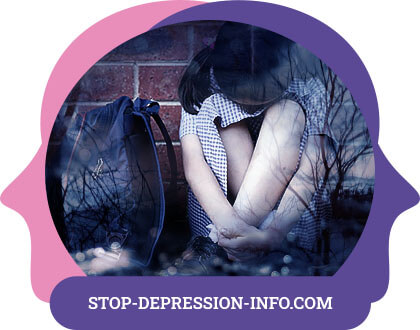
Depression in children is quite another matter, not yet fully explored. It has long been known that this age period is often accompanied by sadness and sadness, which often reach such a degree that they can hurt themselves. Depression in children can occur in a "pure" form and in some kind of mask (hidden). Usually in the second case, children complain about general breakage, low spirits, lack of appetite, and incomprehensible pain in different parts of the body. If the complaints linger, if the patient's behavior causes fear in others, then it is better to consult with a pediatrician and the child will already decide whether to consult a psychiatrist. Such depressions are usually cured without any trace, it is only necessary to treat them properly. But if we are talking about depression, then you should always be alert. Any disrespect to the schoolboy, rude attitude towards him (given the increased vulnerability of teenagers, their excessive sensitivity to all kinds of comments and notations) - this and many other things can cause a low spirits or sharpen it, and from that to an irreparable disaster one step.
Psychological foundations of childhood depression
General characteristics, signs and causes of childhood depression
For many teachers and parents, the problem of childhood depression becomes a topical issue. This topic covers both the problems of children deprived of parental care and family children experiencing loneliness, unfavorable family situations, divorce, or death of parents. Unfortunately, there is not enough qualified and comprehensive literature on this topic at present. The works were considered :, Northern A.A. "Depression in children and adolescents" and Drobinskaya A.O. "School difficulties of non-standard children.
Once, psychiatrists argued whether a child can experience depression? Feelings of sadness, longing, weakened interests, reduced overall tone, avoidance of contacts, retardation - typical manifestations of "adult" depression.
In children, it is difficult to identify such signs, first, because they are vague, and second, because a child cannot always give a detailed account of their emotional experiences. Depression in a child is always "disguised": it is both anxiety, school failure, disturbance of relations with peers, anxiety for their health, and fear for loved ones. It is 'disguise' and atypicality that is the most characteristic feature of child depression. Teachers and parents should be aware that depression almost always occurs with complaints about ill health. Complaints of heartbeat, dizziness, nausea, weakness, sleep disorders, various pains combined with lethargy (arms and legs are heavy," "it's hard to walk, I barely got a briefcase"), changes in a child's appearance create a picture of a serious physical illness, and the first months (and even years) are the subject of attention of pediatricians or surgeons. The absence of confirmation of any serious illness in the tests does not exclude the real suffering the child is experiencing, but testifies to the disorder of his or her emotional sphere and should serve as an adult signal of child ill health. These illnesses can be either extremely diverse, often alternating, or, conversely, monotonous, limited to one constant complaint. The most frequent complaints are of abdominal pain in preschool children and headaches in primary school children. Often, children are sure of an incurable disease (the so-called hypochondriac disease). This is manifested in the fact that even when a child is mentioned about someone's illness or death, anxiety increases, and completely unfamiliar even with the elementary symptoms of the disease, they use medical terms somewhere heard and conclude the obvious threat: cancer, AIDS, leprosy, collapse, meningitis, etc. Many children have a strong manifestation of anxiety and fear, which tend to increase in the evening and at night. Undefined, unsubstantiated anxiety is short-lived, but it quickly turns into a specific fear: to be alone, to lose your mother, the child is afraid that his mother will not come to kindergarten to pick him up, that on the way from work she will be hit by a car or killed by bandits. At the same time, fear for myself, my health, life, and future also stands out: "I will grow up and suddenly become a bad person, a bandit, go to jail? What if there is a war, all living things die, there is not enough air, water, food? How to live further, when my parents die"? The highest degree of anxiety is a general, diffuse, unbiased fear, when everything around is concealed and dangerous. So-called panic disorder is also possible: heart attacks, heart pain, dizziness, nausea, chills, frequent breathing. This condition occurs acutely and is often accompanied by a strong sense of fear of death, fear of enclosed space.
The manifestations of depression at different ages may be different.
In a young child, parents pay attention to a decrease in appetite, stop weight gain, capriciousness and slow motion.
In preschool, changes in health status are usually in the foreground, and at the same time, there may be typical depressive signs: quiet voice, sad expression, buying a mime, senile gait.
At younger schoolchildren are more noticeable: isolation, indifference, loss of interest in games, school lessons, sad mood. But usually until the age of 12-13 you can rarely hear a complaint about "sadness" or "sadness" from a child. More often children complain that they are "bored," "not interested," "unbearable," "want to cry," "stone on heart," "dark wall. By the way, complaining about "boredom," which means less interest in the life around them, is one of the most frequent signs of childhood depression. In contrast to depressed adults, children show increased tearfulness or constant readiness to cry, expressed the more the younger the child. Depressed children cry for the slightest reason: when a child is hurt, reprimanded, or encouraged to come to the house by an outsider.
Hypersensitivity, pity (children can cry over a broken flower, a tree cut down, a dead beetle), and pity inanimate objects are also noted. They do not let go of their mother, ask to take them in their arms, rock them, and in their speech the baby intonations appear. Meanwhile, children do not look so sad, but gloomy and moody. Unlike adults, the "vector of guilt" in childhood depression is directed outward. Children are dissatisfied with their parents' attitude towards them, consider them guilty of ill health, low spirits, and express a lot of complaints and reproaches. Starting to doubt their parents' love, they ask the same question many times a day: "Do you love me?", but with a positive answer and affection they calm down for a while, catch the eyes of their loved ones, and try to test their love in naive ways. Any observation, parents' dissatisfaction provokes motor anxiety attacks with screams, crying, ridiculous threats and actions, up to demonstrative suicide attempts. One of the early signs of childhood depression is school de-adaptation. It tends to increase gradually, manifesting itself in the difficulty of comprehending and memorizing learning material. Children spend more and more time preparing homework and do not understand what they have read. Many times retelling the text at home, the next day they can not remember it at the blackboard, can not solve the simplest problems, confused the score. They start crying, saying that all their efforts are in vain, that "there will be two anyway. Become extremely scattered, forget at home notebooks, textbooks, complain about memory loss: "absolutely silly became", "I am not able to study", "I am strong to understand and I do not understand". They think that teachers do not like them for their stupidity, their peers despise them, seek to offend them, laugh at their poor performance, that they are not interesting, unpleasant, and even parents give preference to other children in the family. The child's inherent slowness and awkwardness also appear. Children dress for a long time, cannot run, play with their peers during breaks, look sluggish and clumsy in physical education lessons, and gradually stop attending sports sections that require physical stress. During the period of improvement, the child gives his word tomorrow to go to school, prepares lessons, collects a briefcase, and in the morning either flatly refuses to fulfill his promise, or reaches the school gate and comes home. He can't explain his condition in a related way, all questions are answered by "can't", "don't want" or each time he refers to new unimportant reasons. He is cheerful and calm when due to illness or vacation parents stop discussing the school issue. This state of "school phobia" can last 3-4 years. Both external and internal factors influence the development of depression. The most traumatic factor for early childhood children (under 4 years of age) is separation from the mother, from the family (hospital, sanatorium, 24-hour kindergarten, nursery, child home, etc.), and for children over 5 years of age - a long unfortunate family situation (scandals, abuse of parents, divorce, death of parents). Starting from the age of 7, the most significant factors of depression are school-related problems (change of class, teachers, backwardness from peers, insulting attitude of the teacher). Short phase, rapidity of depression in childhood is extremely rare: the usual duration of depression is from 1-3 months, up to a year or more. At the same time, the intensity of depressive symptoms is variable, associated with the family situation and the physical condition of the child.
Problems of depression in the domestic and foreign literature
According to Nuller Yuri L. and Mikhalenko I.N., childhood depression has become more frequently diagnosed by both domestic and foreign psychiatrists in recent years, but the problem of childhood depression remains the subject of unfinished scientific research. Many foreign psychologists have already written about the possibility of depression at the age of 10. According to their observations, a small percentage of TIR patients fall ill at 10-15 years old, and, as a rule, the first phase is depression. His 1904 manual provides a diagram of the distribution of depressive TIR debut by age. The first 10 years of life account for 1.5% of all cases.
Nowadays, it is difficult to judge the frequency of depression in children, since the diagnosis of depression depends both on the population of children examined and on the non-standard diagnostic approach. Because of the transition to new disease classifications, country scores cannot be compared: the scientific literature in Europe (mainly Austria, Germany) still uses definitions of "manic-depressive depression", "neurotic depression", and "exhaustion depression", while in the United States, with the transition to the DSM-III classification, depression in children has been divided into three classes: Major depressive disorder, disthymic disorder, and adjustment disorder with depressive mood.
In our country, the reports use the international classification of diseases of the IX revision, but in scientific studies are widely used syndromes that break down the basic nosological unit into subtypes. This allows some comparisons of the data of American authors with domestic ones. Behavior disorders with depressive mood seem to be consistent with what stands out as a delinquent variant of the depressive state. Still, comparisons can only be made when work is done in research centers with similar diagnostic approaches, such as P. Cailholes' depression studies.
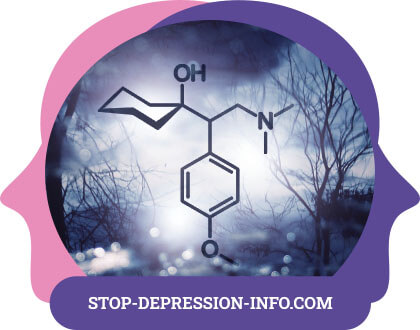
E. Krepelin himself did not describe any particular picture of childhood depression, and only much later did depression begin to include a wide variety of disorders that occur in children from the first years of life: intestinal colic, eczema, screams during night sleep, anorexia, headaches, disobedience, and laziness in schoolchildren, if they occur periodically, are limited in time and are accompanied by an inability to perceive joy, lowering of mood, expressed at least in a sad expression of the face or in tearfulness.
Some authors identify a specific group of depressed children with enuresis, emphasizing the non-neurotic or organic nature of depression. These children have a depressed mood, tend to cry, show immaturity in their reactions to others, are evil and have a tendency to act asocially from early childhood. Seizures of these depressive states are usually prolonged. Such pictures became known as hidden, masked depressions and depressive equivalents. Description of them in the works of many authors convincingly shows their relationship to depression (biochemical studies, successful treatment with antidepressants). However, it remains to be seen whether these depressions are an illness inherent in childhood that does not continue in adult life, or whether they are the first phases of an early onset of TIR that will gradually lose the features of early onset diseases and take the form of one of the syndromes characteristic of endogenous depression.
Catamnestic studies have been conducted to monitor children from early childhood to early adulthood. S. Chaz et al. (1983) studied the fate of 133 sick children with indeterminate depressive paintings. Six of them were diagnosed (DSM-III) with major depression, dystemia, and behavioral disorders with depressive syndrome at ages 8, 12, 10, 17, 16, and 13. All of these individuals had typical depressive episodes later on, while others had no recurring depressive episodes.
In young children, more typical manifestations of depressive conditions are also described. Children become lethargic, lying quietly in the crib, not showing interest in others, sometimes crying without explaining the reason. Sleep and waking rhythm is disturbed, appetite is reduced, body weight is reduced more and more, sometimes a pronounced alimentary dystrophy develops. Appearance is pathetic, suffering. Children do not reach for help to others, they are immersed in themselves. Characteristic of monotonous and rhythmic swinging movements - head and whole body. These children are prone to colds and infectious diseases, which together with exhaustion, in the absence of medical care can lead to death. This depression is best evidenced by the constant sad and obedient expression. Can this condition be considered a depressive phase of TIR? Obviously, only prolonged catamnesis can provide an answer. In foreign literature, in the origin of depression in children of this early age a great deal of attention is paid to mental deprivation caused by both isolation from the mother, placement in a public institution, and improper treatment of the child in the family Developing painful conditions are called anaclisistic depression, "institutional child syndrome," "deprivation syndrome.
To the description above, from the works of these authors we can also quote: "Children who were before that time smiling, cute, spontaneously active and in friendly, free communication with the environment, become noticeably crying, sad or afraid, when trying to communicate they desperately cling to an adult, demanding attention, stop playing actively. In the following period, the bad mood deepens. The tearfulness disappears and the child's care of others deepens, the child lies in bed turning away, the face acquires a "frozen" or melancholic expression; he sits or lies for long hours motionless with his eyes wide open, lethargically, as if not noticing the others. The child loses weight, insomnia appears.
Such depression develops as psychogenic (separation from the mother). However, there are observations that already bought up depressive states may appear again.
Depression of preschool and early school age (under 10 years) is the most difficult to diagnose. It is manifested mainly in somato-vegetative and motor disorders. In some cases, lethargy, passivity and apathy prevail; in others, anxiety and anxiety prevail. There are sleep disorders, appetite, enuresis, enkoprez, senestopathy, complaints of undefined pain in different organs. Depression is manifested in the suffering expression of the face, a quiet voice. These children say the mood is bad, but they don't specify it; there are no clear depressive statements; they are rude, aggressive, and disobedient in the family, which leads to a diagnosis of depression. Thus, the depression itself is masked by childish whims and somatic complaints.
N.M. Iovchuk notes that depressions of this age are characterized by a saturation of the clinical picture with many disorders, often syndromally incomplete and fragmented. Depending on the main symptomatology, it highlights the following depressions of this age: 1) somatized depression; 2) anxiously agitated depression; 3) depression with fear; 4) dysphoric depression; 5) depressive "pseudodebility"; 6) sluggishly adynamic depression. The emphasis on pseudo-debility coincides with our observation that depression in early school-age children often appears to be an outwardly unreasonably occurring decline in learning ability, increased fatigue, and learning disabilities. Reflection on school material is becoming unsustainable and requires more and more time and night classes. Emerging somatic complaints and somatoalgic syndrome result in children not being referred to a psychiatrist right away. Depressive conditions in children of this age last for weeks, pass by themselves, and then repeat themselves. Most depressions that started at this age gradually lose their periodicity and a picture of schizophrenia is formed. In other cases, much less frequently, the depressive affect becomes leading, and the picture of the disease attacks is increasingly close to that observed in adults.
In 10 year old children, for the first time, depressive conditions appear as a characteristic triad of symptoms, but with some features. At this age, children may feel sadness, but it is either accompanied or occasionally replaced by a dysphoric condition. Children are not so much dissatisfied with themselves as with others; there is social isolation in the school community, behavioral disorders with aggressive manifestations that have never happened before. Obvious motor retardation is usually absent. Productive activity is slowed down, communication is difficult, facial expressions are frozen, but in general the child is mobile. In the morning he plans to go to school, but his bad mood keeps him from entering the classroom; he wanders the corridors, goes out to the street to go somewhere, goes to the movies, and sits there seance after seance until time allows him to return home. This is an escape from an environment where he is used to being cheerful and cheerful, an escape from the need to make volitional efforts, to strain himself mentally, but it looks like delinquency and makes it difficult to diagnose. Depressive ideas - self-accusations, low values - are usually experienced, but they are elementary, naive, concise, without philosophy (unlike the depressive ideas of schizophrenic patients): these are statements that he has a bad character, weak will, he failed the class; often there is a motive that his parents will get sick because of his bad studies: "daddy is a car driver, he is nervous because of me, there will be an accident on the railway", "he started to study badly - daddy will have a heart attack". Boys often have insufficient physical development as a subject of ideas of low value, and girls are full. If teases to their physical image are close to dysmorphomania (pimples on the face, bad shape of the nose, etc.), it is necessary to think about the possibility of schizophrenia once again.
The specificity of age is expressed in the frequency of somatow vegetative manifestations. Children often complain about headaches, aggravate or occur such psychosomatic diseases as bronchial asthma, gastric and duodenal ulcer, obesity or sudden weight loss. There is a lability of heart rate, a tendency to tachycardia, indeterminate pain in the heart area in the absence of its organic affection. The second difference is behavioral reactions; at the same time, they have distinct gender differences: boys show a desire to disrupt evil, to defuse mental tension by an aggressive act, girls show sexual promiscuity], protest against internal discomfort is expressed in asocial actions.
Specifics and ways to overcome depression
The problem of treatment of depression is usually considered within the framework of three approaches to the influence on symptoms that have been most successful in the opinion of specialists: antidepressant drug treatment, Cognitive and behavioural therapy and interpersonal therapy. Due to the fact that the treatment of depression in children is a relatively young area in science and practice, directly reflecting the methods used in adults, the system of actions on this disorder in childhood is neither diverse nor unique. The acceptability and efficacy of methods of depression treatment used in child psychology and psychiatry are just beginning to be explored.
The first condition for competent support to depressed children is early qualification and diagnosis of the disorder. The barrier to this is often a distorted parent-child relationship, the extremes of which are insensitivity to the child's experiences, severe coercion and punishment, or, conversely, the desire to protect or isolate from peers, to give a break from school.
If depression is expressed insignificantly, it may well pass spontaneously, without the intervention of specialists. The main thing is that attention should be paid to the child's state of mind. The child himself will not come to an adult with complaints about the mental illness. He and with careful questioning, as a rule, can not formulate what he is worried, and at best, will try to explain his state of mind external causes.
In any case, if an unfortunate, depressed condition lasts more than two weeks, even if the cause of it seems perfectly understandable and "natural", it is worth seeing a doctor. Behind the apparent clarity may hide a painful condition, for the exit from which you need medical help. Both parents and teachers should remember that the sooner the child receives this assistance, the easier it will be for him/her to get out of the painful condition, the less possibility of adverse consequences. A direct, mild persuasion should instill in the child the idea that his or her condition is painful and, therefore, can be cured. As experience shows, the very issue of treatment is painful for both children and parents, because it seems that children need to stop studying for a long time, to find a somatic illness in their home, and adults do not trust doctors. Overbearing a depressed child requires time, perseverance, extreme correctness, and most importantly, active emotional empathy. If we do not consider cases of complex dramatic relationships in school, the most preferable for a child is to study in his own class. In many years of joint learning, peers, as a rule, not only do they not hurt or humiliate a classmate, but they usually provide care and protection to the child. Termination of education and upbringing is unacceptable even with severe forms of mental illness. With the persistence and patience of parents and the attentive and flexible attitude of teachers, such children gradually get used to the team, make progress in certain areas of knowledge, and learn well and even excellently. It is also desirable that children themselves actively participate in the recovery process. Here too, the task of teachers and parents is to help children realize their natural abilities and interests. At the same time, the most important thing will be the attitude of close adults: sympathy, understanding of a child's suffering, and the ability to distract him or her from painful thoughts and switch to interesting problems in the process of communication. Such communication will be a necessary foundation for child recovery. In cognitive and behavioural therapy, the approach developed by A. Beck is considered the main one; in addition, there are a number of methodologies related to immediate intervention, which include social science theory based on modeling, self-control and problem solving; self-instruction training and rational emotional therapy, as well as their various combinations. In addition to the above interviews and questionnaires filled out by both children and adults (parents and teachers), these methodologies use indicators such as body alignment (toward others), eye contact, clear speech, and emotional coloring as criteria for effective interventions. In role-playing, attention is focused on the child's problems; cognitive restructuring is aimed at teaching skills to recognize irrational thoughts and to solve problems. Cognitive and behavioural therapy is generally associated with developing the skills of self-control, self-actualization and situation management. Children learn to control their thoughts, to relax, to solve problem situations independently or in a group, to influence their moods, to build positive potential of their activity, to increase their self-esteem, to work out a more adaptive style of behavior, to analyze the delayed consequences of this or that type of behavior. Individually and in general, the application of these methodologies to children and adolescents suffering from depression produces positive results and an encouraging prognosis. Often, family problems are a direct source of childhood depression, so involving family members in therapeutic interventions has been both reasonable and successful. For the first time, family therapy as part of child depression was proposed by C. Stark and his colleagues. 1987 was an extremely productive year for trying to combine cognitive and behavioural techniques with family therapy. As a result, educational courses were born that were read separately for children and their parents, and systems of family and school therapies were created. The course "Overcoming Depression", developed by P. Levinson and his colleagues, is based on a psychological and educational approach that includes the presentation of informative knowledge and training in the following techniques: controlling depressive moods through relaxation, increasing the number of positive events, blocking negative thoughts, the effectiveness of communication, problem solving, and social skills. Systemic interpersonal approach to overcoming depression, proposed by I. Gottlieb and K. Colby, is a family therapy system that takes into account intraphysical (cognitive) and interpersonal factors. This approach resembles a top-down continuum of interpersonal psychotherapy used in a family context, and assumes that, at least in part, depression is caused and developed by family relationships. In addition, depression often performs some intra-family functions, in particular, a child's depressive manifestations can relieve or dampen marital conflict between parents. Systemic interpersonal therapy is generally brief, effectively oriented, and focused on the present. The process of psychotherapy investigates the interactions of family members that support depression, and the focus is transferred from the depressed individual to the family as a whole. Family psychotherapy is often supplemented by individual psychotherapy, where depressed individuals are explained the negativity of their own cognitive style and the impact of their behaviors on others; they also develop a need to increase the number of pleasant activities in which they can participate.
A small number of comparative studies to assess the efficacy of cognitive and behavioural therapy, including family therapy, have shown encouraging results and prospects for the development of this area in coping with depression. Thus, over the past decade, a major step forward has been made in the diagnosis and treatment of childhood and adolescent depression, and psychologists have played and continue to play a major role.
Conclusions
Depression in a child is always "disguised": it is both anxiety, and school failure, and violations of relations with peers, and concern for their health, and fear for relatives. It is "disguise" and atypicality that is the most characteristic feature of childhood depression. Teachers and parents should be aware that depression almost always occurs with complaints about ill health. In preschool, changes in health usually come to the fore, and at the same time, typical depressive signs may appear: a quiet voice, sad expression, buying a mime, senile gait.
At younger schoolchildren are more noticeable: isolation, indifference, loss of interest in games, school lessons, sad mood. But usually until the age of 12-13 you can rarely hear a complaint about "sadness" or "sadness" from a child.
Depression of preschool and early school age (under 10 years) is the most difficult to diagnose. It is expressed mainly in somato-vegetative and motor disorders. In some cases, lethargy, passivity, and apathy prevail; in other cases, anxiety and worry prevail. There are sleep disorders, appetite, enuresis, enkoprez, senestopathy, complaints of undefined pain in different organs. Depression is manifested in the suffering expression of the face, a quiet voice. These children say the mood is bad, but they don't specify it; there are no clear depressive statements; they are rude, aggressive, and disobedient in the family, which leads to a diagnosis of depression. Thus, the depression itself is masked by childish whims and somatic complaints. The problem of treatment of depression is usually considered within the framework of three approaches to the impact on symptoms that have been most successful, according to specialists: antidepressant medication, cognitive and behavioural therapy and interpersonal therapy. Due to the fact that the treatment of depression in children is a relatively young area of science and practice, directly reflecting the methods used in adults, the system of actions on this disorder in childhood is neither diverse nor unique. The acceptability and efficacy of methods of depression treatment used in child psychology and psychiatry are just beginning to be explored.
Articles
Research organization
Theoretical study preparation
In order to determine the type and nature of depression, 9 "A" grade 1 s were examined. V. Tatyshly (the base of the study) using the following methods: the MariaKovacs test for determining depression, the Hamilton scale for assessing depression, and the self-diagnostic checklist. There are 10 pupils in the class.
Maria Kovacs Depression Test
Developed by MariaKovacs (1992) and adapted by the staff of the Laboratory of Clinical Psychology and Psychiatry of the Research Institute of Psychology, it allows to determine quantitative indicators of the spectrum of depressive symptoms - low mood, hedonistic ability, vegetative functions, self-esteem, interpersonal behavior. The test is a self-assessment scale of 27 points for children and adolescents from 7 to 17 years.
It reliably distinguishes people and adolescents with a psychiatric diagnosis of "major depression" from other psychopathological conditions and healthy schoolchildren. Sensitive to the dynamics of depressive disorders over time, gives each indicator of the depth of depression. The survey has been translated into many languages (in addition to original English), and can therefore be used to examine children from different cultures.
Compared to other tools that measure depression in children, it requires minimal reading skills. It quantifies the range of depressive symptoms - mood decline, hedonistic ability, vegetative functions, self-esteem, and interpersonal behavior.
Several items test the effects of depression specific to children (e.g., school).
Each point contains three options, coded 0, 1, or 2 respectively, and measures are directly proportional to the depth of depression.
A child should choose one of three values for each item on a scale based on the last two weeks.
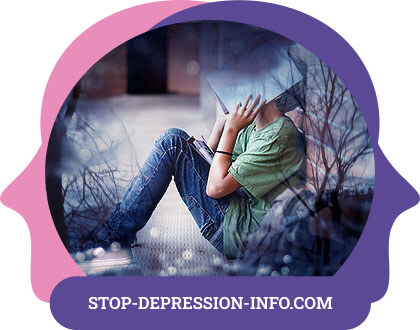
The total normal CDI value can vary from 0 to 54, 50 is the critical value after which the depth of symptoms increases. The interpretation should be based on an analysis of responses to individual indicators, factor indices and values, and the integration of test data with additional information such as a clinical interview with the child and direct observation of the child's behavior.
The questionnaire is easy to present and evaluate. It takes no more than 15 minutes to complete. It is especially valuable in situations where a quick and algorithmic evaluation of a child's problems is required.
Interpretation of results
During the implementation of this methodology, it is important to note that children should be relaxed and answer without much difficulty if a child finds it difficult to answer any of the items in the methodology, then they should be asked leading questions or bring up a life situation: "What would you do ...? Out of 10 children it was difficult for 3 children, but they could navigate after one or two leading questions. There were also cases when children simply did not understand the terminology or just did not understand the meaning of the question.
Analysis of the method's results (based on general indicators that) showed that in this group of ten children with strong symptoms there are 3 persons with moderate severity - 2, below average - 2, without signs of depression - 3 persons.
If we look at the scale analysis, we can see a clear picture of the nature of depression.
Scale A (general mood decline negative assessment of own effectiveness as a whole, constant waiting for trouble, tendency to tears, increased anxiety) 3 - high, 1 - above average, 1 - average, 1 - below average, four persons without any explicit signs of depression.
Scale B (identification of oneself with the role of bad, aggressive behavior, high negativism of disobedience) 3 - high level, 1 - above average, 1 - average, 5 have no pronounced signs.
Scale C (high school failure rate) 1 - high, 2 - above average, 1 - average, 1 - slightly below average, 5 are not expressed.
Scale D (high level of attrition, feeling of loneliness) 3 - high level, 4 - slightly above average, 3 - without signs.
Scale E (negative assessment of own inefficiency, presence of suicidal thoughts) 2 - high level, 1 - above average, 1 average, 6 - not expressed.
Note: Counting the total score: this is the sum of child's scores on all points in the test. Scores are also counted for each test scale.
Then, using a special table, you need to know the age and sex of the child. Sensitive to the dynamics of depressive disorders over time, gives each indicator of the depth of depression.
Conclusions
- There are age-specific features of depression, that is, each age has its own specific activity and emotionality.
- The following features of depression are observed at school age:
- In middle school age children have a weaker nervous system than in older children;
- Weakness is manifested primarily in the low endurance of the nervous system, rapid fatigue, and mild occurrence of
- An indicator of weakness is also strongly developed inductive (external) braking.
- Reduced performance (endurance) is accompanied by reduced irritability.
- Many studies show that it is by middle school age that large differences in nervous system performance between children and adults disappear.
But against the background of age characteristics, a child also has features that speak for the severity and nature of his or her depression.
Psychological and pedagogical recommendations for coping with depression
How to help teenagers emotionally? First of all, it is necessary to constantly remember that teenagers are emotionally still children in the transition period of their development. They are not adults yet, even if they are young. Their needs, primarily emotional, are still the same as those of children. One of the most common mistakes of parents, teachers, and other adults is to consider adolescents as full adult members of society. Many people who work with teenagers in their line of duty neglect their children's emotional needs. What do teenagers really need? To be loved unconditionally and accepted as they are, to be cared for and cared for, but also respected and taken seriously. It is very important that teenagers themselves feel the care and love of others.
Adults who prefer an orderly tone in their relationships with children, who are sure that their demands are not subject to any discussion and must be strictly followed, according to English psychologists, strongly risk children's health. As a result of such harsh upbringing, children become squeezed and withdrawn, often focus on negative emotions, and tend to be depressed. In adulthood, they are at a much greater risk of chronic illnesses (primarily, cardiovascular diseases) than those children who grew up in an atmosphere of tenderness and trust.
Things are not better for adolescents. As we know, adolescence is a period of puberty, when the need for all nutrients increases significantly. Pay attention to the following data:
- Meat contributes to calcium deficiency, and 66.3% of adolescents use it as a food. Therefore, meat needs more lactic acid products and biologically active nutritional supplements containing calcium.
- 77% of teenagers prefer biscuits, sweets and chocolate.
- Only 44.2% of teenagers eat green and root vegetables 4-6 times a week.
- 73.4% of teenagers eat out of the house 4-6 times a week and mostly eat so-called "fast food," which has very little valuable nutrients.
- Physically active teenagers have much higher energy costs than those who lead a sedentary life. Unfortunately, only those teenagers who take care of their appearance or young athletes who strive to improve their sporting achievements through better nutrition watch their nutrition.
What are the vitamin needs of teenagers?
- Vitamin C - up to two grams per day (not purely synthetic ascorbic acid, but a natural source of vitamin C, which contains bioflavanoids, without which vitamin C is not properly digested).
- Vitamin B-6 in the form of pyridoxine or pyridoxal phosphate (dose crushed and gradually increased).
- A complex of trace elements containing zinc and manganese.
- Calcium complex, where calcium is combined with magnesium, zinc, chrome, boron and vitamin D-3.
- Encoded salt or tablets of pressed sea cabbage or kelp.
- Girls who barely eat meat during adolescence should take a complex of multivitamins and micronutrients containing iron, among others, to prevent anemia, and an important micronutrient, molybdenum, which helps balance bone growth during puberty.
Conclusion
Thus, depression is an affective state characterized by negative emotional background, changes in motivational, cognitive representations, and overall behavioral intensity. Subjectively, a person experiences, first of all, heavy, painful emotions and experiences - depression, longing, despair. Attractions, motives, volitional activity are sharply reduced. Characteristic of the thoughts about one's own responsibility for a variety of unpleasant, difficult events that took place in the life of a person or his relatives. The feeling of guilt for the events of the past and the feeling of helplessness in the face of life's difficulties are combined with a sense of hopelessness. The self-esteem is sharply reduced. The perception of time, which flows painfully long, changes. In a state of depression are characterized by slowness, lack of initiative, rapid fatigue; this leads to a sharp drop in productivity. In severe, prolonged depression, suicide attempts are possible.
They are different:
- functional states of depression, which are possible in healthy people within the normal mental functioning;
- depression is pathological - one of the main psychiatric syndromes.
Breakdowns in the emotional and, correspondingly, physical sphere in a teenager can arise because of a variety of stresses typical for this age: exams, transition to another school, first love, conflicts at school - all this is extremely serious for a teenager, although these problems often seem "nonsense" to adults. Please do not forget that a child's life is "drama," as the teacher Janusz Korczak thought, and in our country, especially in hot spots, it is also a tragedy.
Я. Korczak wrote: "But even an adult has many such minutes when he is sad without his mother, without his father, when it seems to him that only parents could listen to him, advise him, help him, and if necessary, forgive and regret. It means that an adult can also feel like an orphan.
Poor performance, delay in puberty or, conversely, excessively early sexual activity, teenage depression, propensity for delinquency, even allergic symptoms may be caused by the fact that the body of a teenager physically fails to cope with excessive stress, exhausting the internal reserves of the body. A stressful situation for a teenager may be first love, loss of virginity, panicking at sexual attempts of persons of the same sex, leaving home when entering college or institute, or living in a dormitory. The army is also an incredibly strong stress factor: not used to stressful situations and too glossy mom's sons are capable even of suicide.
Many adults find it difficult to predict and detect stress in their lives, to say nothing about teenagers. But still, if possible, it is necessary to bypass stressful situations or at least reduce stress and always be on the side of your children.
Love teenagers, look at them with tenderness, pay more attention to them, ask them, talk to them, listen to them carefully and focused, take care of them, feed them healthy food and constantly since childhood give them vitamins, and they, when they grow up and start a family, will carry this difficult relay of unconditional parental love for children - further!
By: Alexandra Dimant



